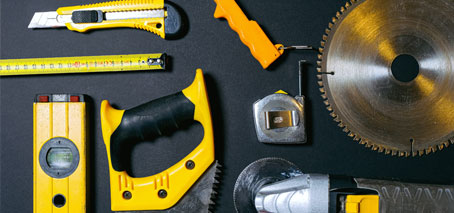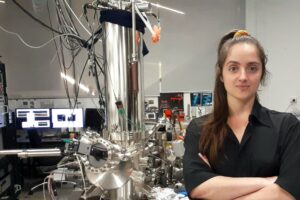X- ray photoelectron spectroscopy (XPS) is used for material characterization, providing quantitative information on the chemical composition of materials by identifying the type of elements that are present (nowadays, with a detection limit in the range of one part per thousand).
XPS also allows the identification of the chemical state of the elements – such as the types of bonds formed by each atom and their individual oxidation state.
“The technique can be applied to a wide range of solid materials, for example verifying the resulting stoichiometry from a particular synthesis method, or checking for the presence of dopants,” explains FLEET Research Fellow Dr Iolanda Di Bernado (Monash University).
Iolanda has just written an explainer on XPS material characterisation for the Nature Review Physics series ‘Tools of the Trade’.
The Nature series spotlights scientific methods for a wide audience, covering both experimental and theoretical/computational techniques.
Iolanda’s article Non- disruptive techniques for depth profiling in photoemission spectroscopy explains that although XPS can only probe the top few layers of atoms from the surface, certain XPS ‘hacks’ allow for deeper profiling, without destroying the sample as alternative sputtering methods do.
Varying the spectrometer’s angle relative to the sample surface allows the probed volume, and thus depth, of the sample can be varied (pictured above).
“Normal emission measurements (left panel) are less surface sensitive, while grazing emission measurements (right panel) are more surface sensitive,” explains Iolanda.
“This proves particularly useful, for example, to estimate the thickness of a surface oxide layer, or to prove that a sample is indeed ultra- thin, or even to determine the ordering of layers in an ultra- thin film.”
Look for future FLEET articles in the series, and follow Nature Physics Review’s twitter feed for more pieces on different techniques.
One of the three inaugural Women in FLEET fellows, Dr Iolanda Di Bernardo is contributing to FLEET Research theme 1, topological materials and Enabling technology theme A, atomically-thin materials, working with FLEET CI and Director Prof Michael Fuhrer and FLEET associate investigator Dr Mark Edmonds.
The Centre for Future Low-Energy Electronics Technologies (FLEET) is a collaboration of over a hundred researchers, seeking to develop ultra-low energy electronics to face the challenge of energy use in computation, which already consumes 8% of global electricity, and is doubling each decade.



